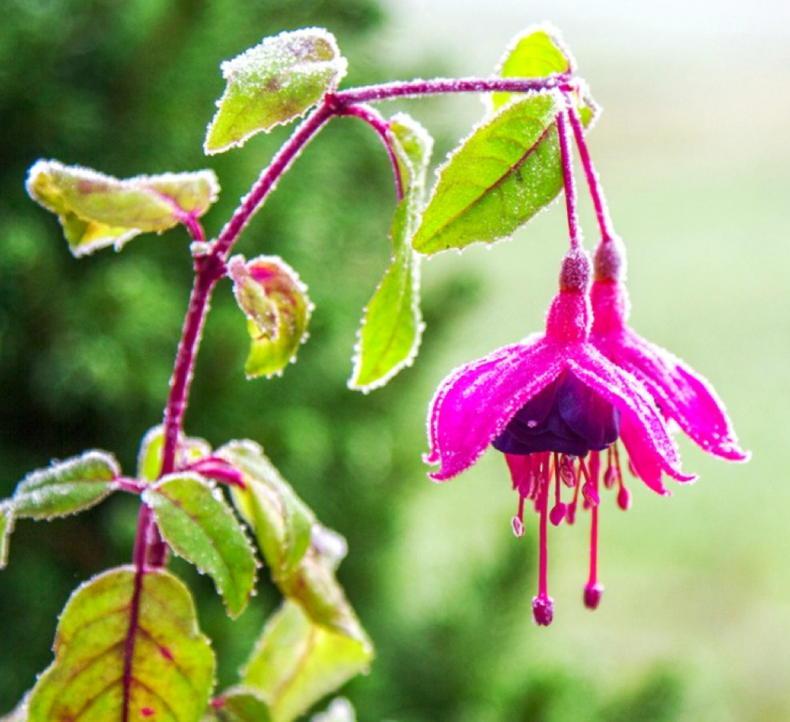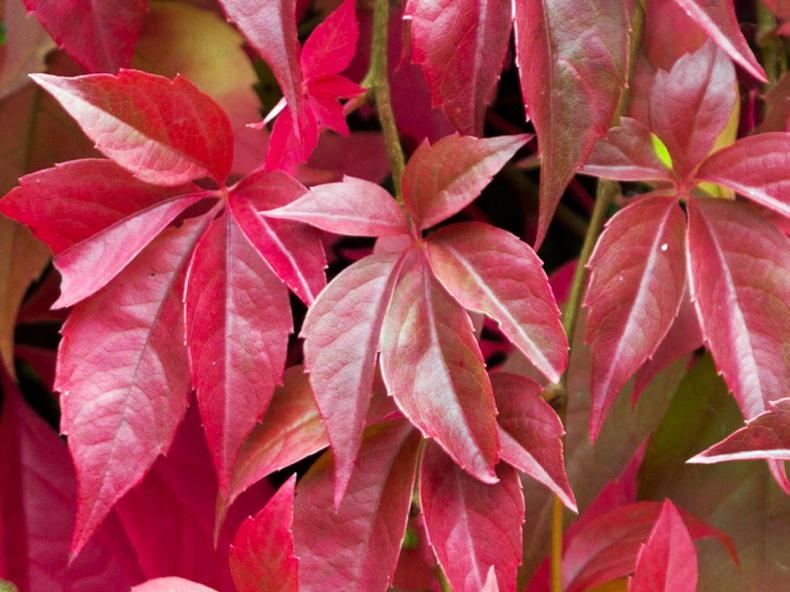Name: Virginia creeper
Botanical name: The botanical name for Virginia creeper is Parthenocissus quinquefolia, the second part of the name meaning five-leaved. It is a native of North America, hence the name Virginia creeper.
It is related to Boston ivy, Parthenocissus tricuspidata, the second part of that name meaning divided in three, which the Boston ivy is – divided in three sections. Although called Boston ivy, this species originated in China.
Family: Both of these related species are members of the grapevine family. The foliage is quite similar in appearance and in providing superb autumn colour, and these plants sometimes produce small bunches of currant-sized fruits which are very bitter and not edible.
Garden value
The Virginia creeper and Boston ivy are very similar in appearance, growth habit and garden value.
Many farm houses and other houses in the countryside date are decorated with a creeper or two, which help the house to sit more comfortably into the landscape.
By contrast, when an old house has a long-established creeper removed, the character of the house itself can change dramatically, leaving it bare.
Of course, climbers and creepers can be overdone too with the house disappearing under a mass of foliage.
The difference between a creeper and a climber is that the creeper makes its way up the walls by attaching itself to the wall, while a climber needs some form of support, such as wires or trellis.
Creepers are less effort because they only need to be planted but climbers are restricted by their need for support.
Most country houses feature creepers rather than climbers, which is why Virginia creeper and Boston ivy are such popular choices.
Garden use
If your house has a lot of bare walls on view and tends to look a bit bare, even one creeper or climber, well chosen, can make a great difference in softening its appearance and making it look more homely and lived-in.
Old houses benefit most from creepers and climbers but even houses built in recent years can look better with some creepers on the walls, especially if the house is of more traditional design. In that case, creepers can give the house the impression of much greater age and take the ‘raw’ look of a relatively new house.
The most commonly used creeper is the Virginia creeper, Parthenocissus quinquefolia, which has five leaflets, and the related Boston ivy, Parthenocissus tricuspidata, which has three-cornered leaves.
Both of these vines creep up the walls by means of tiny suckers and they can cling very solidly even when the vine is many decades old. The related Henry’s vine, Parthenocissus henryana, is not as vigorous.
These creepers make the most impact because they can cover a very large area, growing outward year after year, but eventually will need to be cut back when they reach widows and the roof. The sucker pads grip very tightly to plaster, stone, brick, wood, paint surfaces and even to glass. They must be removed before they grip tightly.
Prepare the planting hole well and do not be concerned about roots affecting the house foundations.
Planting can be done now, pinning the creepers down at soil level to begin their climb. Although this is the time of year when creepers are least effective in ornamental terms, it is a good time to plant them.

Pruning fuchsia
Owing to the late and mild autumn and early winter, fuchsia shrubs stayed in flower for a remarkably long period.
In most parts of the country, frost brings the flowering season to an end sooner. If a fuchsia bush has become too large, it can be cut back at any time from now on.
Fuchsia begins to grow fairly early in spring and leaving it too late will mean it will waste some of its growing season and flower later.
Annual pruning in early spring is a good way to keep the bushes small and neat. Because fuchsia flowers on the current season’s stems, there is no danger of pruning away the flowers.
Pruning of fuchsia can be light or severe and the bushes will recover well in either case, sprouting from ground level if necessary, more like a perennial flower.
Fruit, vegetables and herbs
Prune apple and pear trees. Check on young fruit trees to see if they have been rocked by winds. Most dwarfing rootstocks have small roots and the stakes will need to be solid. Lift rhubarb stools for forcing in a dark, warm place. Seed potatoes of early varieties can be put in to sprout now.
Trees, shrubs and roses
Check trees and shrubs planted last year for signs of wind-rocking. Young trees that have been wind-rocked may need to have more soil placed around them and re-firmed, or staked if necessary. The ground has been too wet for planting on and off in recent times. It is best not to plant into wet soil.
Flowers
Bedding flowers, such as geraniums, impatiens and lobelia, can be started off in a heated propagator now, but it is still too early for most of the easy kinds, such as petunias. If the ground is not too wet, border flowers can be lifted and divided, if necessary. Many of these are beginning to show growth.
Lawns
In a good spell of weather, if the soil is firm enough, a first mowing can be carried out. If the lawn area has drainage, make sure that the drainage outlets are clear to allow surplus water to escape. The lawnmower should be serviced and the blades sharpened for a new season.
Greenhouse and house plants
It is still a little early for growth in a greenhouse, but check to ensure that plants are not too dry in their pots. Check also for signs of greenflies and other pests as these can cause severe damage to greenhouse plants that are already weakened by lack of growth and poor light over winter.






 This is a subscriber-only article
This is a subscriber-only article










SHARING OPTIONS: